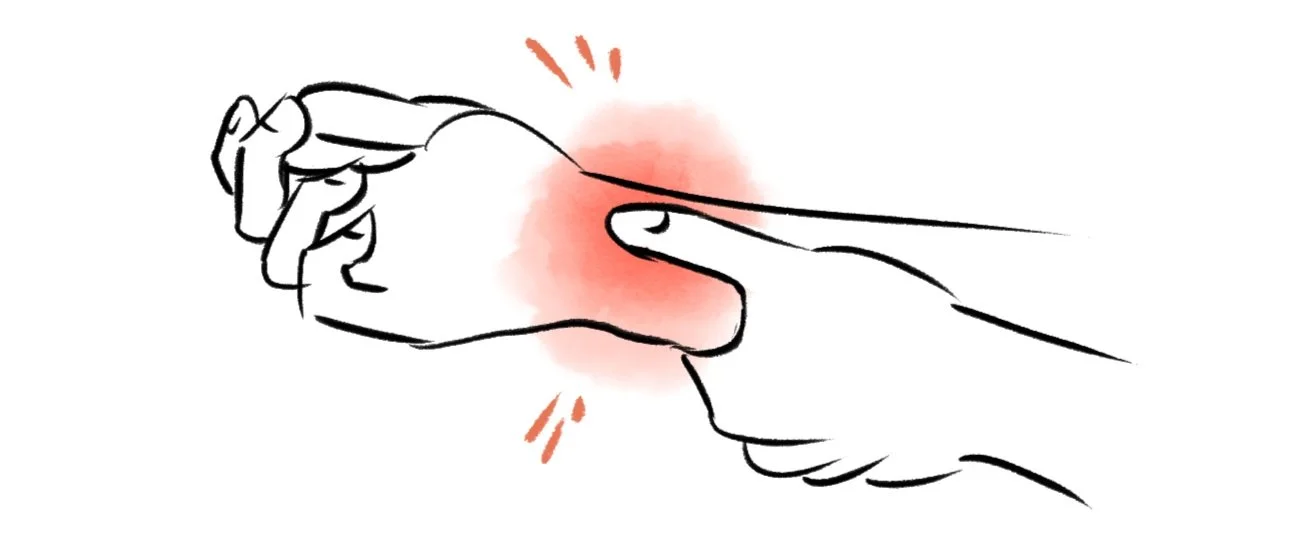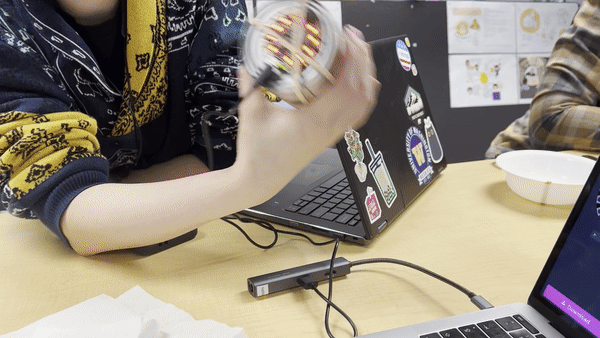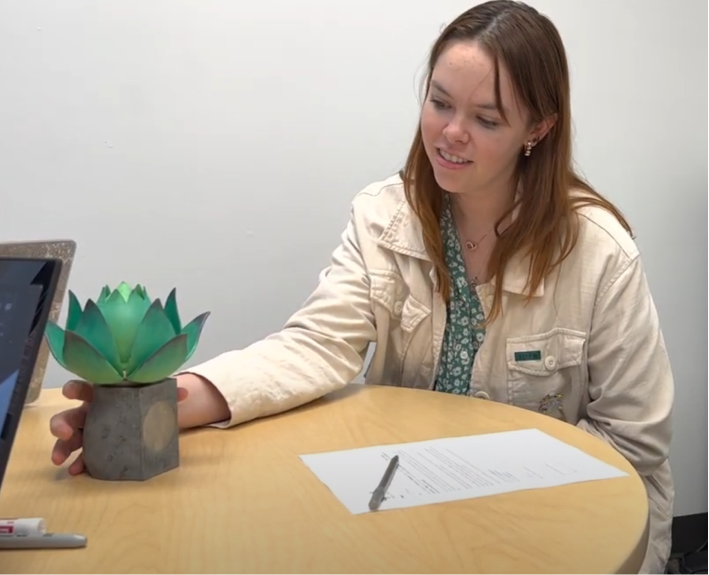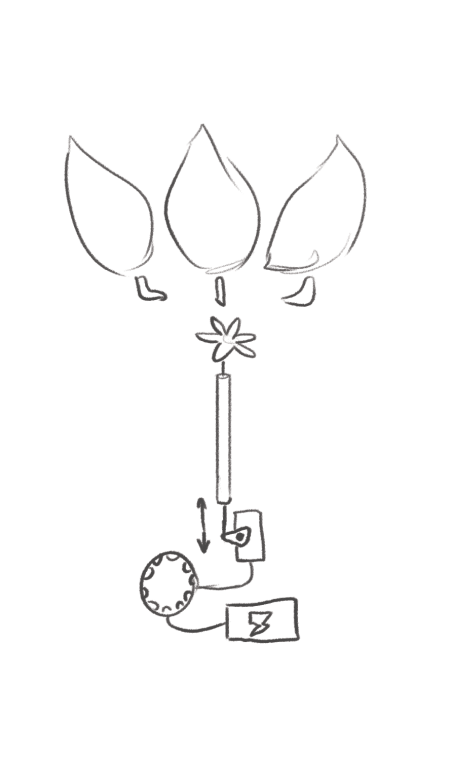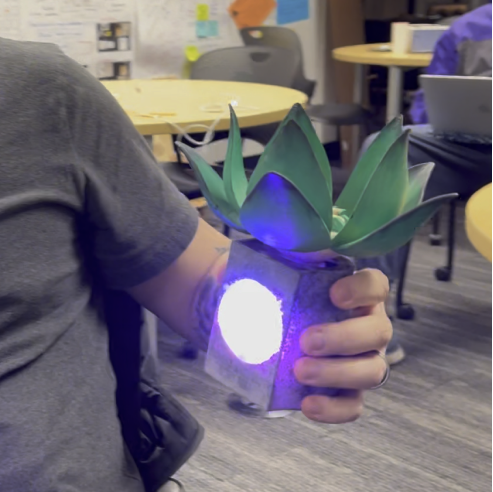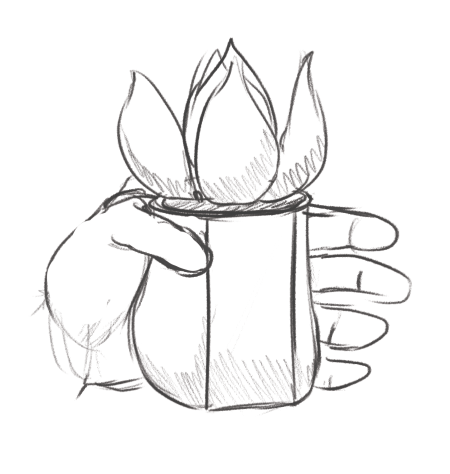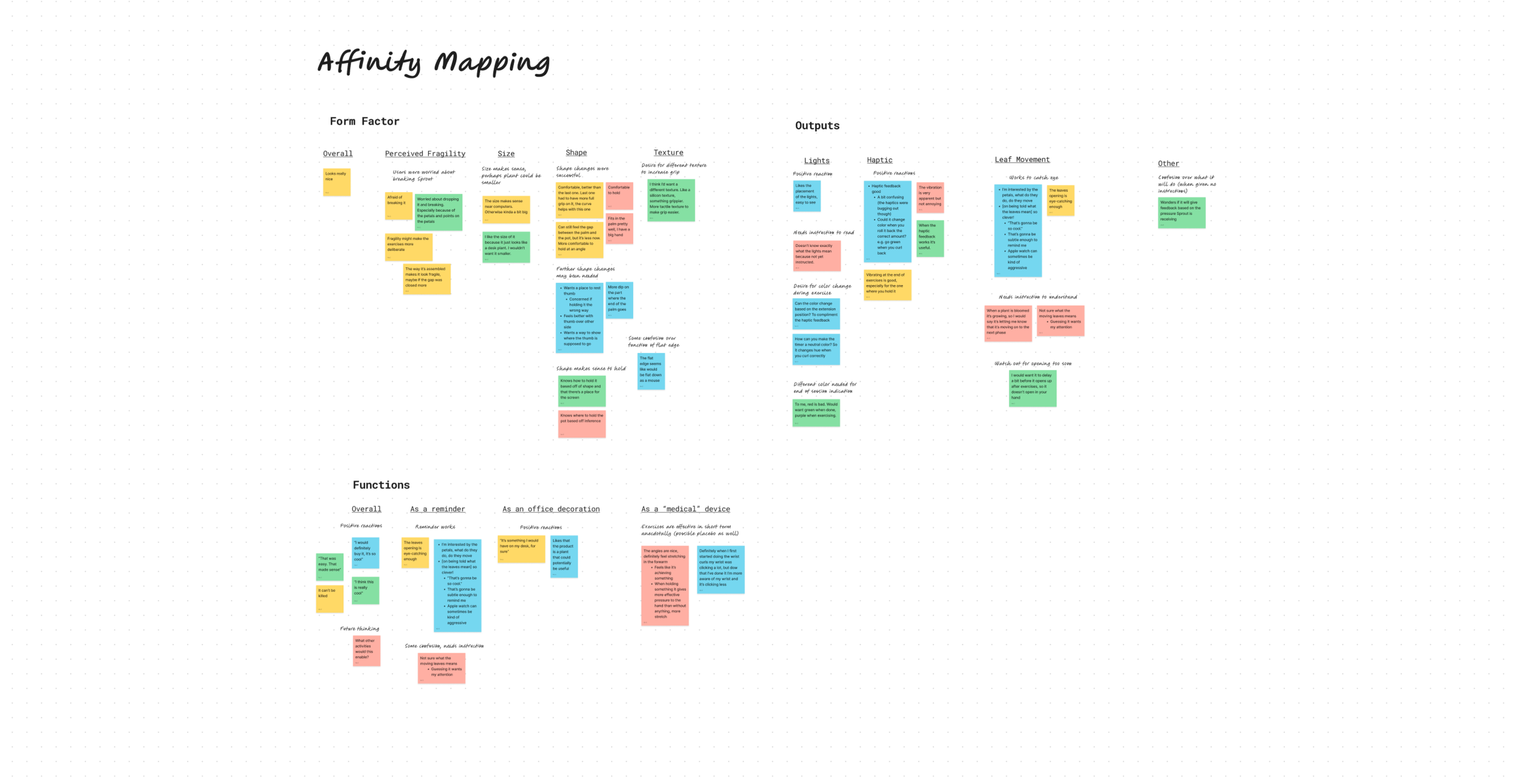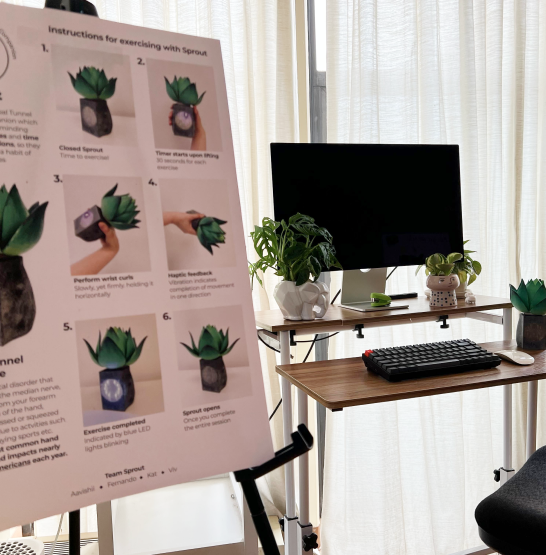
A post-carpal tunnel surgery care companion
Sprout
CLIENT
Graduate School Project
TEAMMATES
Aavishii Patel Saxena, Kat Iberer, Fernando Suarez Martinez
TIMELINE
Jan-March 2023; 10 weeks
SKILLS
Secondary research, evaluative research, ideation, design, prototyping
OUTPUT
Physical working device prototype
TOOLS
CPX Microcontroller, 3D printing, motor, haptic device
Sprout is a device designed to accompany a user who is recovering from carpal tunnel surgery. After surgery, patients must perform exercises up to 10 times a day, and it’s all to easy to forget. Sprout addresses this barrier by providing a subtle physical reminder to exercise as well as a timer for the exercises.
Sprout is designed to resemble a plant that lives at your desk. Over time, the leaves close up to indicate it's time to perform your exercises. Sprout lights up as a timer and vibrates during certain exercises to aid in performing them correctly.
This project was a deep dive into prototyping with physical components. Throughout this project I gained experience with physical prototyping, basic coding, 3D printing, user testing, and product design.
Background
The problem space given was "care in the home." After surveying possibilities in the problem space, the topic came up of work from home environments, specifically office work and the problems it can cause. One of those problems is repetitive stress injuries, or RSIs, including Carpal Tunnel Syndrome.
Carpal Tunnel Syndrome is caused by repetitive stress on the median nerve, resulting in inflammation and pain. In the worst cases, it requires surgery to fix. After surgery, patients are instructed to perform exercises several times a day to prevent scar tissue build up.
However, adhering to this regimen can be difficult. Because of the proliferation of reminder apps and how easily push notifications on a device can be ignored, we wanted to steer away from the standard app-based solutions.
GUIDING QUESTION
How might we better encourage post-Carpal Tunnel Surgery patients to adhere to their exercises?
Ideation
(concept illustrations by teammate Kat Iberer)
The result of numerous explorations of many problem spaces was a carpal tunnel care companion named Sprout.
To subtly remind the user that it is time to exercise, the plant’s leaves would slowly close up over time, and open again once the exercises were completed.
The plant contains a timer function to ensure the user is exercising for long enough. The plant itself could also be physically held in some of the exercises, providing haptic feedback when exercises like wrist curls were done successfully.
There also was an initial ideation for a screen function, with the intention for it to show exercise diagrams, which you may see in some of our earlier iterations, but this function was later scrapped.
MY CONTRIBUTION
I ideated and sketched possible solutions for a wide variety of problem spaces relating to our class topic.
After laying out all our ideas at once, I provided input for the down-selection of ideas and ultimately agreed on Sprout as the final blueprint for our project.
Prototyping & Testing
LO-FI PROTOTYPE
We made a very basic lo-fidelity prototype to test whether the device worked conceptually and to start to see the various components we would have to build.
We tested the leaves using basic video editing to show the leaves in a closed versus open state to visually gauge whether leaf position was eye-catching enough to work as a visual reminder.
We also explored different formats for the screen, which would be scrapped by the next iteration.
MY CONTRIBUTION
I provided input on the lo-fi prototype including which size pot to select and possible materials for the leaves.
ELECTRONICS EXPLORATION
We started by exploring some of the electronics we were using in class, specifically the tilt sensor of the AdaFruit CPX microcontroller. We attached the board to a soup can to mimic a pot and tested the ability of the board to detect the tilt of wrist curls.
MY CONTRIBUTION
I prototyped the initial electronics exploration with the soup can and CPX and tested it myself.
MEDIUM-FI PROTOTYPE
We then moved on to a medium-fidelity prototype that tested the device’s timer and haptic feedback functions.
This version of Sprout involved 3D printing the pot in a custom-designed shape for our needs, as well as integrating the CPX and using the remote vibration function of a dog training collar to “wizard-of-oz” the haptic feedback interaction.
This iteration also required wires for power and to trigger the timer to start.
MY CONTRIBUTION
I assisted in designing the ergonomics of the 3D printed pot. I also provided input on the visual aesthetics of the timer and attempted some debugging of the code.
Affinity map of the first round of user testing. Findings included feedback on the shape of the pot, the efficacy of the lights, and its overall function as an exercise reminder
USER TESTING ROUND 1
We tested this with users and received valuable feedback.
Specifically, the timer’s ending color was initially red, which read to user’s as “bad” or “incorrect” so we swapped it for blue.
The shape of the pot was awkward and left a gap between the palm of the hand and the pot, so improved the shape in the next iteration.
The vibration motor timing was not the best, so we integrated a more finely controllable haptic motor into the next iteration as well.
MY CONTRIBUTION
I played a significant role in developing the study plan for the testing sessions. During the user testing I acted as a notetaker as well as a “wizard” who controlled the remote vibration trick we used to test users. After the testing I affinitized the notes into findings and themes..
HI-FI PROTOTYPE
We updated the shape of the pot, first testing the new shape using clay stuck to the back of the previous iteration.
We also updated the code to alter the timer colors and look and added a more finely controllable haptic buzzer
We found instructions to make a 3D printed flower that opened and closed using a servo motor. After modifying the files to look more like a succulent plant, we printed the mechanism and put it together.
MY CONTRIBUTION
I provided sketches and diagrams of how the hi-fi prototype would be put together and how the pot shape would be iterated on from the previous prototype.
I also utilized my background in painting to choose the colors and paint the leaves and pot of the prototype.
Some of my sketches of the hi-fi prototype of Sprout
Leaves closed
Leaves open
Timer on
The “guts”
Affinity map of the second round of user testing. Findings included feedback on the shape of the pot and its overall function as an exercise reminder
USER TESTING ROUND 2
This iteration received very positive remarks, including a repeat participant who complimented the new shape of the pot. This iteration is the final design we submitted for this prototyping-focused class.
MY CONTRIBUTION
I again assisted in evaluative research with this prototype as well, this time as a notetaker. After research I once again affinitized the notes into findings and themes.
Results & Reflection
REACTIONS
Our design received many positive reactions at our project showcase at the end of the quarter.
Viewers were enthralled by a device that opened and closed on its own, the haptic feedback on doing the wrist curls, and the timer indications.
Many people reported that they would be interested in this solution, that they could see themselves buying this product if it were ever to make it to market.
FINAL ITERATION
We thus finalized the last iteration of Sprout, a post-Carpal Tunnel Surgery care companion.
Sprout operates by slowly closing up over time, indicating it is time to exercise. After picking up Sprout, the timer activates and the user moves through a series of exercises for the hand and wrist. The leaves then open up again indicating a successful round of exercise.
We staged Sprout as part of a home office experience in our showcase.
MY CONTRIBUTION
I helped stage the design for the showcase event, and introduced the design to visitors of the showcase.
REFLECTION
Looking back on our process, we could have started work earlier on the leaf opening and closing mechanism, as that took the longest to build. Tackling the hardest part at the outset is definitely something I’ll keep in mind in the future.
Additionally, this project provided useful experience with physical prototyping, and thinking skills beyond just the screen. I wish we had more time to test and iterate, but for the time we were given, I think we did pretty well.
GOING FORWARD
While the class may be over, I think Sprout has potential to move toward a product. Through what we learned while iterating, the principle of having an analog tool to remind users to do their exercises is worth pursuing.
Given more time, I would recommend continuing to iterate and test other versions of this design, as well as get further evaluative research and SME (Subject Matter Expert) input.


